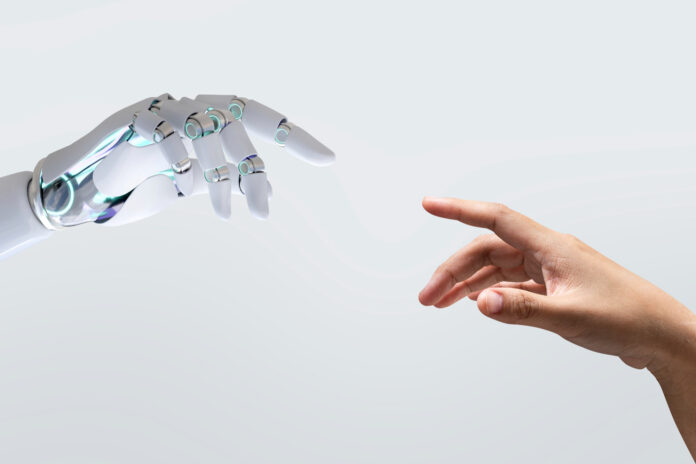
AI is like teaching computers to think and learn, almost like humans. Picture a machine that can understand human feelings, solve difficult puzzles, and play with you. The field of computer science involves creating machines that can do tasks that are normally considered as involving human intelligence such as pattern recognition, language appreciation, solving problems, decision-making, etc.
It may sound unbelievable, but Artificial Intelligence does exist and is ordinary in our daily interactions. For instance, whenever you ask your phone a question and receive an instant response, such can also qualify as a physical embodiment of using AI.
Similarly, when a website suggests a product or movie based on your previous interests, it is also a manifestation of AI. Through AI, machines can acquire knowledge from experience, adapt to new information, and execute tasks that were previously deemed exclusive to humans.
What is Artificial Intelligence?
Imagine you have a toy robot. Now, think of giving that robot a tiny brain. This brain lets the robot think, learn, and make choices on its own. This special brain for machines is what we call “Artificial Intelligence” or “AI” for short.
So, what’s so special about AI and is artificial intelligence dangerous? Well, unlike regular computer programs that follow strict steps, AI can make its own decisions. It is almost as if you teach the robot how to think out of the box. The robot with AI does not have to be told to do “this and that”. It learns to know by itself what to do if it has already learnt something in the past.
In essence, as an illustration, after feeding the robot with many images of dogs together with the comment “These are dogs”, in due course the robot will start identifying dogs in other images even though they are different from the initial ones. This is because the AI has recognized dogs from the previous photos.
In our world today, AI is not just in toy robots. It’s in many things around us. When you talk to your phone and it understands you, that’s AI. When you watch a movie online, and the website suggests another movie you might like, that’s AI too. It’s like having a smart helper on your computer or phone that tries to think and help in the best way it can.
Where is AI Used?
On a daily basis, in a number of forms, the AI is supporting us. Invisible AI is in the background making things easier, faster, and smarter for us even though we might not see it. Here’s a closer look at where AI is used:

In Our Homes: Many people have smart speakers like Amazon’s Alexa or Google Home. These devices use AI to listen to our questions and give us answers. They can play music, tell us the weather, or control the lights, all thanks to AI.
On Our Phones: Think about the last time you took a photo with your phone. AI helps make that picture look better by adjusting the light, focusing on faces, or even removing things that shouldn’t be there. And when you type a message, AI predicts the next word you might want to use, helping you type faster.
Shopping Online: When you shop online, AI helps in many ways. It suggests products you might like based on what you’ve looked at before. If you’ve ever wondered, “How do they know I might like this?” – that’s AI working!
At the Hospital: Doctors and nurses are getting help from AI. Machines can quickly look at many X-rays or scans and spot signs of diseases, sometimes even before humans can. This helps doctors find problems faster and give better treatment.
On the Road: Some cars today have AI features. They might tell you when you are going outside of your lane, automatically break when they feel like there is a danger, and also park themselves. There is a possibility of seeing more autonomous cars powered by AI in the coming days.
In Schools: Teachers use AI to understand how students learn. Programs can suggest what a student should study next or if they need extra help in some areas.
How Does AI Work?
Do you remember any time when you tried to help another person learn some games or gain insight into a new subject matter? Just like we train our friends at how we understand things, we teach computers to do this and that is called artificial intelligence which in short can also be referred to as AI. Nevertheless, how is it done? Let’s find out!
Firstly, imagine your brain. It’s made up of many connections that help you think and learn. Similarly, AI has something called ‘algorithms’. Think of them like recipes. These recipes guide the computer on how to think and solve problems. The better the recipe, the smarter the computer acts.
Let’s discuss the process of learning. Think back to when you first rode a bicycle. At the beginning, it might have been challenging, but with practice, it became easier. This is similar to how artificial intelligence (AI) learns – instead of practice, it relies on data.
The more data it receives – like pictures or sounds – the better it becomes at its designated task. For instance, by analyzing thousands of dog pictures, AI learns to recognize what a dog looks like. So when shown a new picture, it can confidently identify and say, “Hey, that’s a dog!”

Moreover, AI employs an intriguing concept known as ‘neural networks.’ Imagine them as intricate mazes within the computer system. Information enters this labyrinthine network, traverses numerous paths within it, and then emerges with an answer.
Lastly, some AI systems can learn by themselves. If they get something wrong, they remember the mistake and avoid it next time. It’s like when you touch something hot and know not to touch it again.
Types of AI
When discussing artificial intelligence (AI), we are referring to computers that possess the ability to think and learn. However, it is important to note that AI can take on various forms and have different capabilities.
-
Narrow AI
Imagine you have a tool that’s really good at one job, like a hammer. It’s great for hitting nails but not for cutting paper. That’s like Narrow AI. It’s made to do one thing really well. For example, there are AIs that can play chess better than any human. But that same AI might not know how to turn on a light. When you ask your phone a question or use a translator app, you’re using Narrow AI.
-
General AI:
Now, think of a robot in a movie that can talk, think, learn new things, and even have feelings. That’s what we imagine when we think of General AI. It’s like a computer with a brain as smart as a human’s. It would be able to learn anything, just like a person. But there’s a big thing to know: We don’t have this kind of AI yet. It’s still something scientists are dreaming about.
-
Superintelligent AI:
This is a bigger idea. It’s like General AI, but way smarter. If we ever create a Superintelligent AI, it could think faster and better than humans. Some people are excited about this idea. Others are worried. They think that something smarter than us might be hard to control.
Why is AI Important?
Imagine you had a helper that never got tired, could think super fast, and remembered everything you ever taught it. Sounds amazing, right? That’s what Artificial Intelligence, or AI, is like. It’s a computer brain that can do some tasks even better than humans. But why is AI so important to us?
Speed and Efficiency: Think about a massive library with millions of books. If you wanted to find one piece of information, it might take you weeks. But AI can do this in seconds! It works quickly, which makes many artificial intelligence jobs faster and easier.
Always Learning: AI can keep learning all the time. If you teach it something today, it remembers forever. This means it can keep getting better at its job. For example, AI in cars can learn better ways to drive safely by looking at lots of data from different roads and situations.
Helping People: AI is like a helpful friend in many areas. It can suggest the best medicine for a sick person by analyzing lots of medical data. It can help teachers find the best way to teach kids. It can even help you find the best recipe for a cake if you tell it what ingredients you have at home!
Doing Things Humans Can’t: Some jobs are too hard or dangerous for people. Like exploring deep in the ocean or space. AI can go to these places and send us information, making new discoveries possible.
Making Life Easier: Many of us use AI every day without even knowing it. When we ask our phone for the weather, or when our car warns us about something in the road, that’s AI working to make our lives easier and safer.
What do you think? Can artificial intelligence replace human intelligence and what is the most advanced form of ai? Let us know in the comments!




AI will for sure make our lives easier in the future
I got into ai last year, it seems to keep amazing me every month how many things change
Comments are closed.